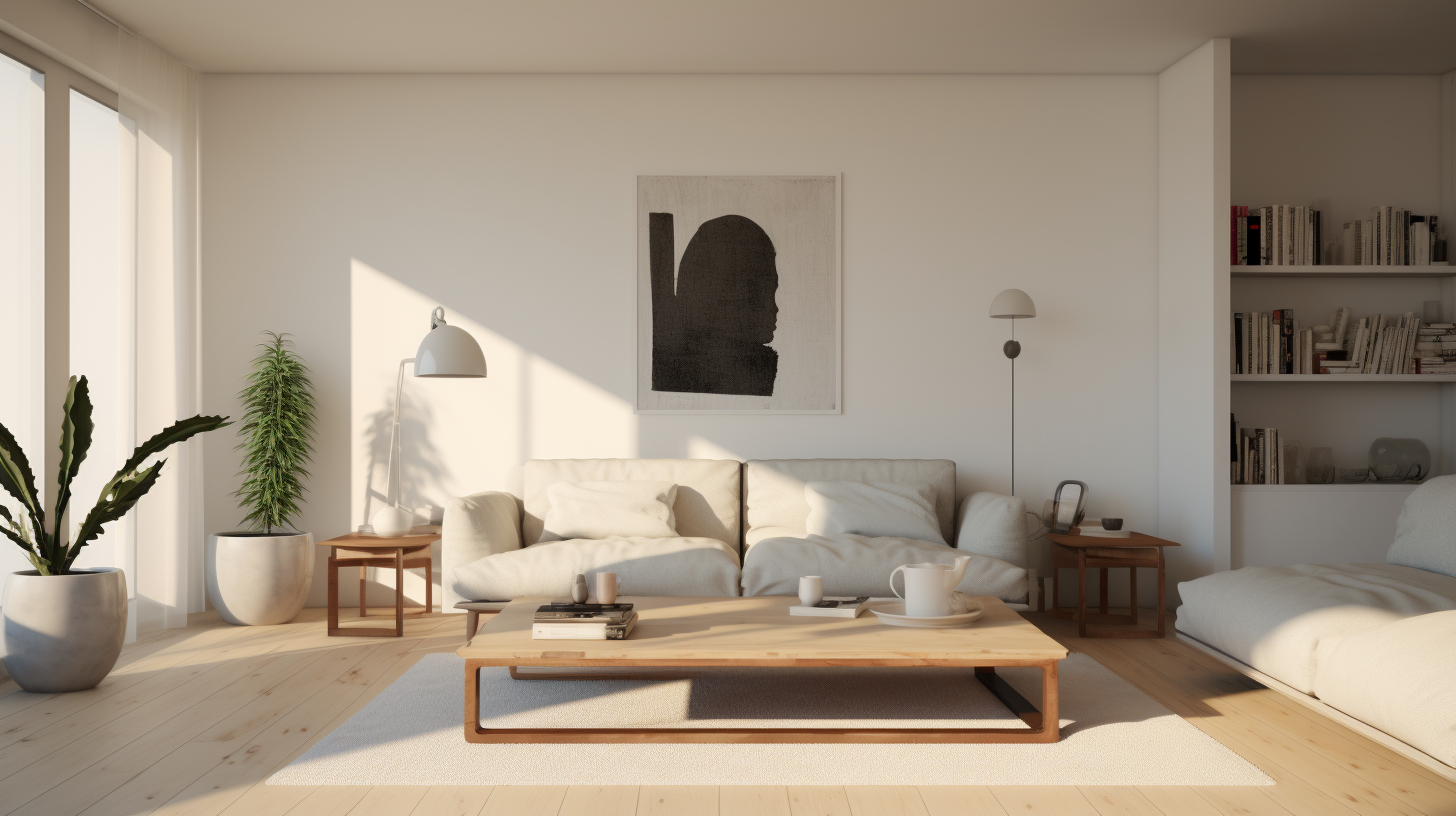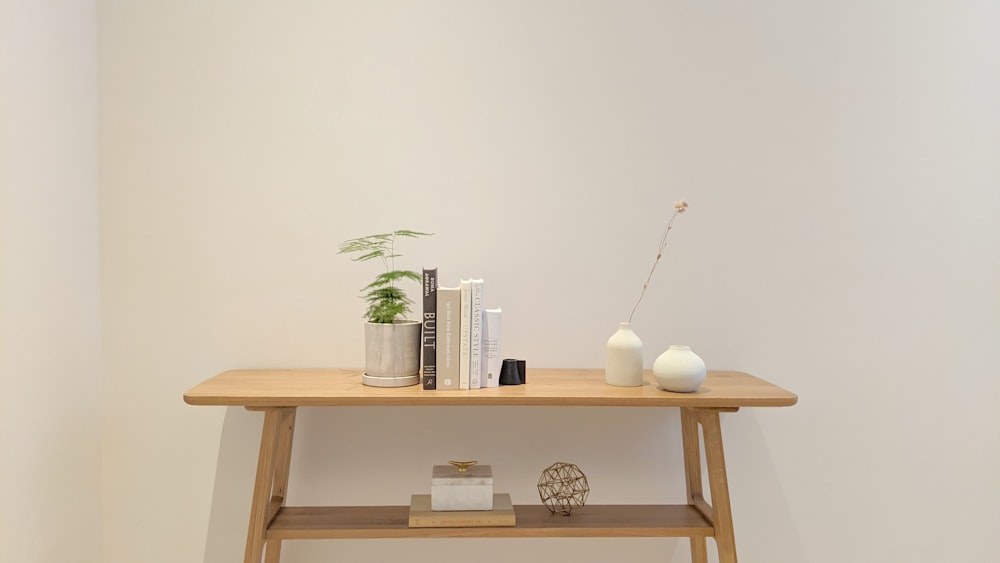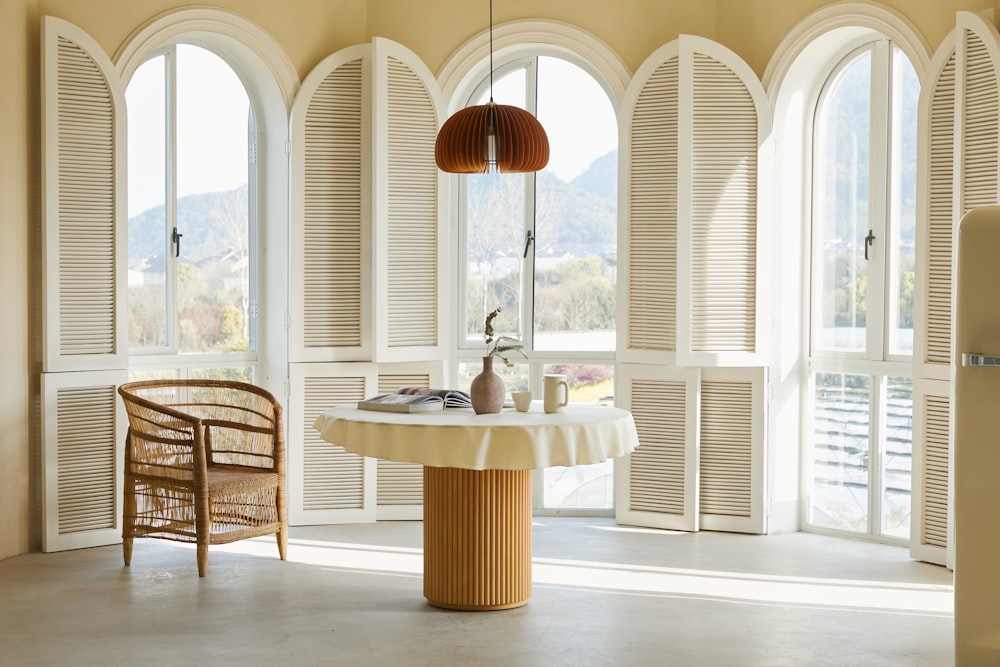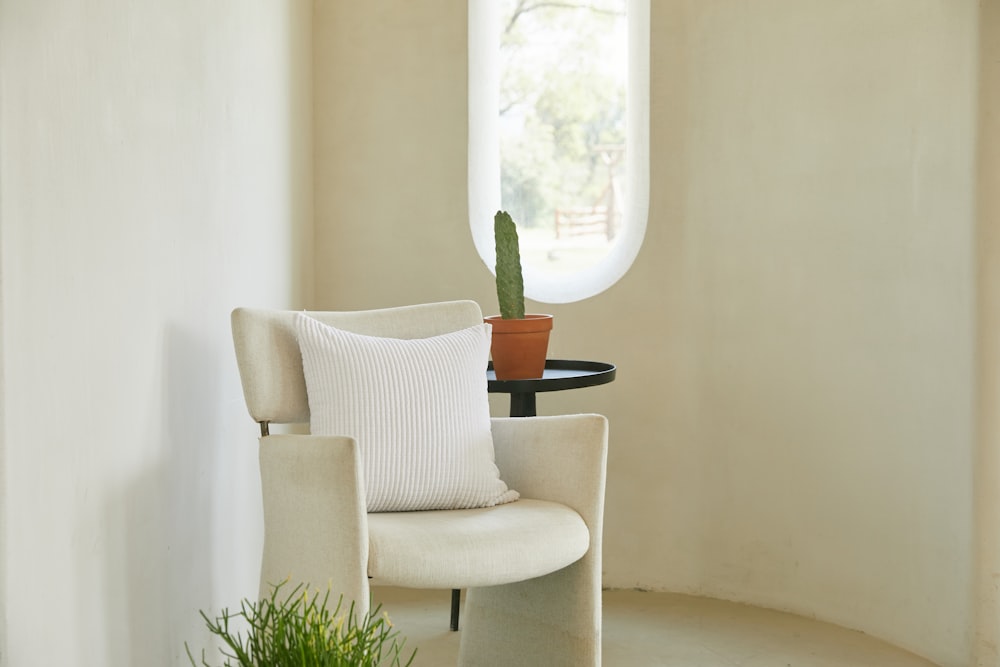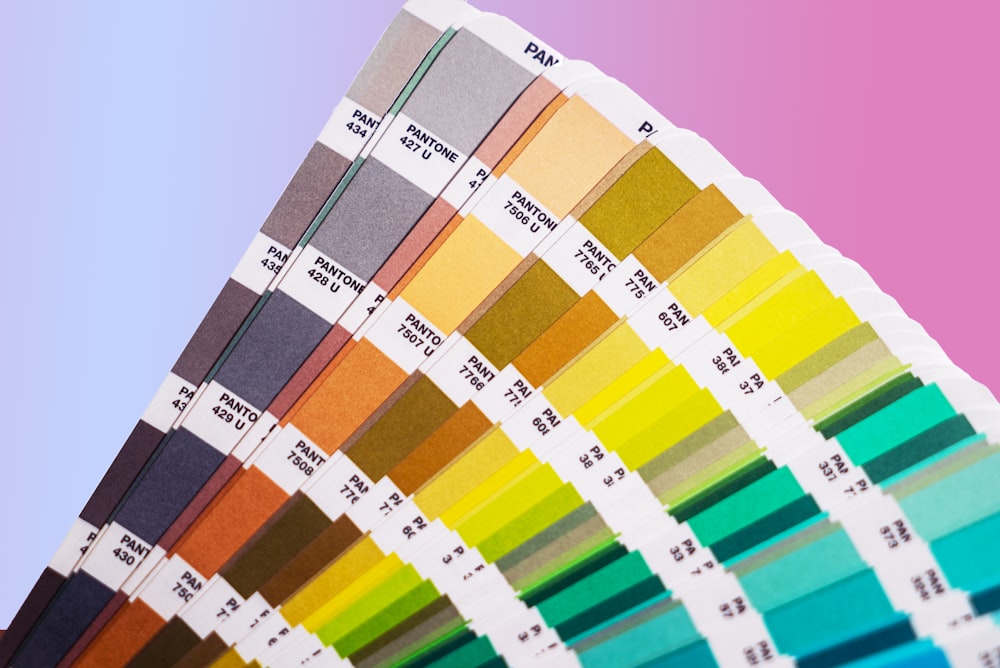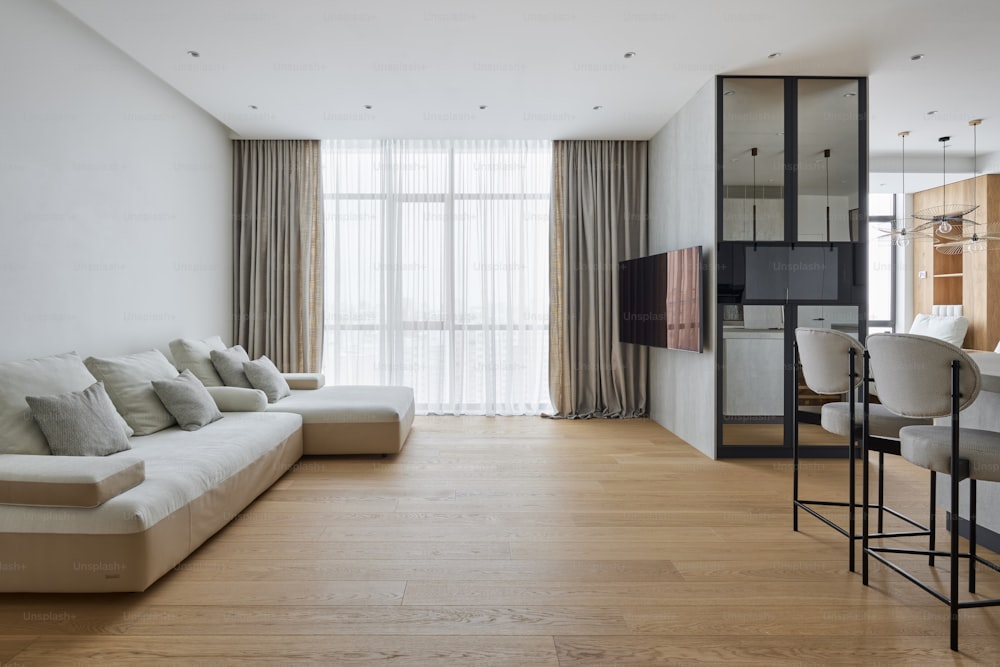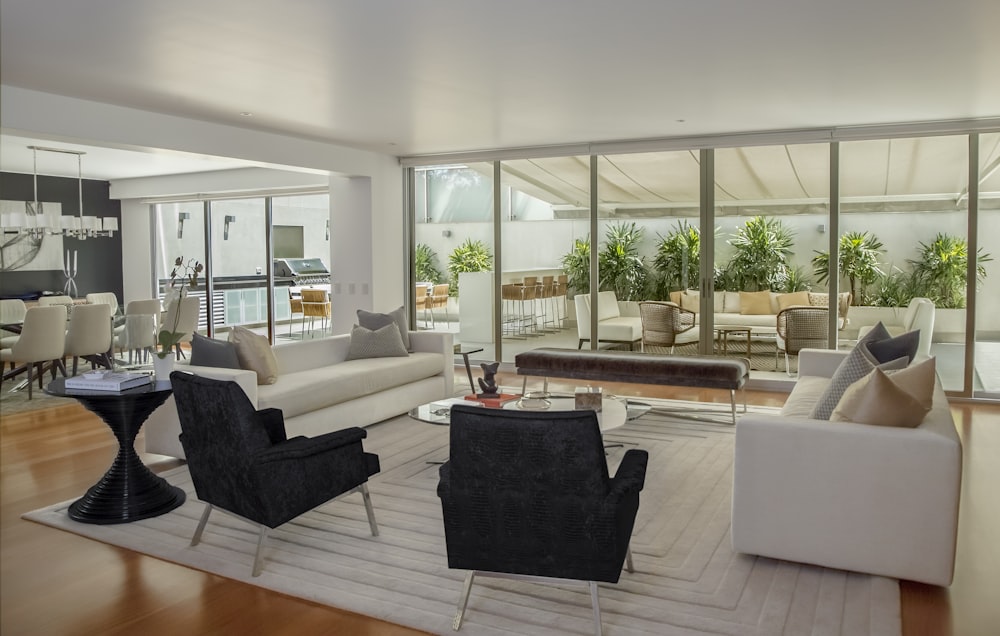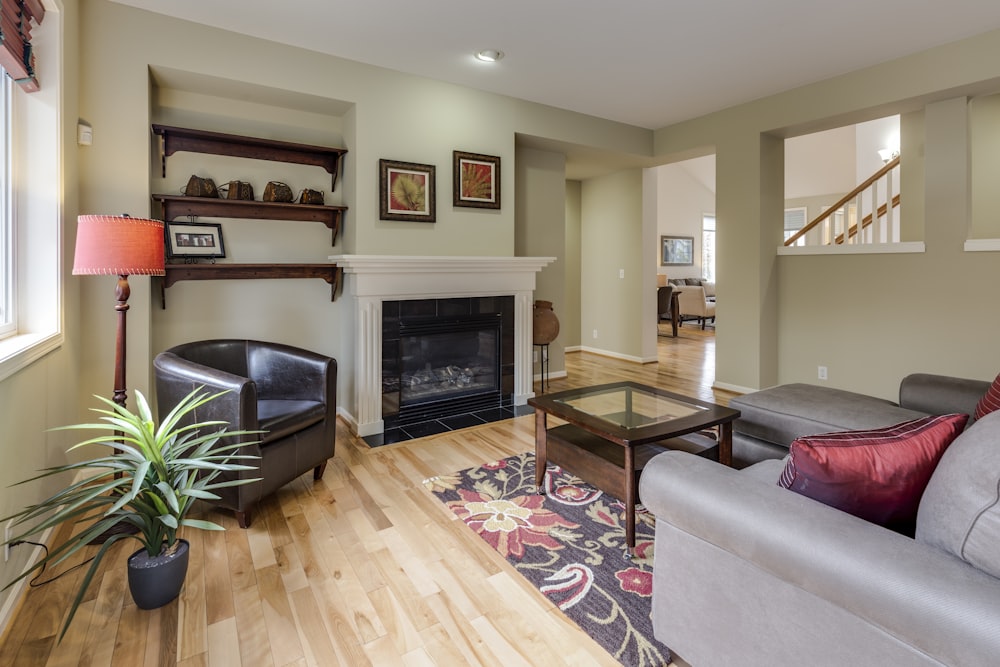Welcome to “Creating a Minimalist Home: A Beginner’s Guide for First-time Homeowners in 2023.” In a world filled with material possessions and clutter, it’s refreshing to embrace a minimalist lifestyle. Creating a minimalist home not only offers a clean and organized living space, but it also promotes peace of mind and a sense of tranquility.
As a first-time homeowner, it’s a great opportunity to start fresh and implement minimalist principles into your new home. In this guide, we will explore the concept of minimalism, its benefits, and practical tips on how to create a minimalist home that suits your needs and style.
Whether you’re a fan of the minimalist aesthetic or simply seeking a more simplified and intentional way of living, this guide will provide you with the knowledge and inspiration to create a space that reflects your values and supports your well-being.
So, let’s embark on this journey together and discover the joy of minimalism in the comfort of your own home.
Understanding Minimalism
Welcome to the section on understanding minimalism! In this section, we will explore the concept of minimalism and discuss the benefits of creating a minimalist home. So let’s dive in!
What is Minimalism?
At its core, minimalism is a philosophy and lifestyle that emphasizes simplicity, intentionality, and the removal of unnecessary clutter. It is about streamlining and decluttering your physical and mental spaces to create a clean and calm environment where you can truly thrive. Minimalism encourages you to let go of material possessions that don’t add value to your life and focus on what truly matters.
Benefits of a Minimalist Home
Creating a minimalist home can have numerous benefits, both practical and psychological. Here are some advantages you can expect:
- Less stress and more clarity: A clutter-free home can lead to a clutter-free mind. By eliminating the excess, you’ll experience reduced stress, improved focus, and increased mental clarity.
- Greater efficiency and productivity: With fewer distractions and a more organized space, you can become more productive and efficient in your day-to-day life. Minimalism helps you prioritize your tasks and avoid wasting time searching for things.
- Saves time and money: Maintaining a minimalist home means having fewer possessions to clean, organize, and maintain. This allows you to reclaim your time and spend it on things that truly matter to you. Additionally, by curbing unnecessary spending and being mindful of your purchases, you can save money in the long run.
- Enhanced aesthetics: Minimalism promotes clean lines, open spaces, and intentional design choices. This can create a visually appealing environment that is both calming and inviting.
- Reduced environmental impact: By practicing minimalism, you become more conscious of your consumption habits. This can lead to a reduced environmental impact by minimizing waste, conserving resources, and supporting sustainable practices.
By understanding the principles and benefits of minimalism, you can start the journey towards creating a minimalist home that reflects your values and lifestyle. So let’s move on to the next section – Planning Your Minimalist Home.
Planning Your Minimalist Home : A Beginner’s Guide
When it comes to creating a minimalist home, planning is key. Taking the time to assess your needs and lifestyle before diving into the decluttering and organizing process will help you create a space that truly reflects your minimalist goals. Here are some important steps to consider as you plan your minimalist home:
Assessing Your Needs and Lifestyle
Before deciding what stays and what goes, it’s important to have a clear understanding of your needs and lifestyle. Ask yourself the following questions:
- How do you use each room in your home? Is there any unused space that can be repurposed?
- What are the essential items you need in each room?
- What are the activities you enjoy the most at home?
- How much storage space do you require?
- Are there any specific design preferences you have?
By understanding your needs and lifestyle, you can make informed decisions about what to keep and what to let go of in order to create a minimalist home that aligns with your daily life.
Decluttering and Organizing
Decluttering is an essential part of creating a minimalist home. It involves getting rid of items that no longer serve a purpose or bring you joy. Here are some tips to help you declutter effectively:
- Start with one room at a time to avoid feeling overwhelmed.
- Sort your belongings into categories (e.g., keep, donate, sell, recycle, toss).
- Be honest with yourself about what you truly need and use regularly.
- Consider implementing the KonMari method, which involves keeping only items that spark joy.
- Make use of storage solutions to keep your remaining belongings organized.
Remember, the goal is not to throw away everything you own but to create a space that is free from unnecessary clutter and promotes a sense of calm and clarity.
Once you have decluttered, organizing your belongings becomes easier. Invest in practical storage solutions that align with the minimalist aesthetic. Utilize shelves, baskets, and storage containers to keep your belongings out of sight and create a clean and tidy environment.
Now that you have a clear plan for decluttering and organizing your minimalist home, you can move on to the next step: choosing minimalist furniture and decor.
Choosing Minimalist Furniture and Decor
When it comes to creating a minimalist home, choosing the right furniture and decor is crucial. The main principles to keep in mind are quality over quantity, functionality and versatility, and the use of natural and sustainable materials. Here are some tips to help you select the perfect minimalist furniture and decor for your home:
Quality over Quantity
- Opt for well-made furniture that will stand the test of time. Invest in pieces that are durable and of high quality, even if it means spending a bit more initially.
- Avoid cluttering your space with too many furniture pieces. Instead, choose a few key items that serve their purpose well and make a statement.
“Perfection is achieved, not when there is nothing more to add, but when there is nothing left to take away.” – Antoine de Saint-Exupéry
Functionality and Versatility
- Look for furniture that serves multiple purposes. For example, a sofa with a pull-out bed can be used for seating during the day and as a guest bed at night.
- Consider pieces that have built-in storage to help keep your space organized and free of clutter.
Natural and Sustainable Materials
- Opt for furniture and decor made from natural materials such as wood, bamboo, or rattan. These materials not only add warmth and texture to your space but are also more sustainable and eco-friendly.
- Choose fabrics made from organic or recycled materials for your upholstery and textiles.
Remember, the goal of minimalist design is to create a space that is functional, aesthetically pleasing, and free from unnecessary distractions. So, take your time when choosing furniture and decor, and opt for pieces that align with your personal style and values.
Color Palette and Lighting
When it comes to creating a minimalist home, the color palette and lighting play a crucial role in setting the right ambiance. The goal is to create a space that feels calm, spacious, and inviting. Here are some tips to help you make the right choices for your color palette and lighting:
Neutral and Earthy Tones
Minimalist homes often feature a color scheme that is dominated by neutral and earthy tones. These colors provide a sense of tranquility and allow the focus to be on the simplicity of the space. Consider using colors like white, beige, gray, and natural wood tones for your walls, furniture, and decor.
Tip: When choosing colors, opt for muted shades rather than vibrant ones. This will create a soothing and harmonious environment.
Maximizing Natural Light
One of the key principles of minimalist design is to bring in as much natural light as possible. Natural light not only makes a space feel bright and airy, but it also helps reduce the need for artificial lighting during the day. Here are some ways to maximize natural light in your home:
- Keep your windows clean and free from obstructions.
- Use sheer curtains or blinds that can be easily opened to allow the maximum amount of sunlight in.
- Utilize reflective surfaces like mirrors or light-colored furniture to bounce light around the room.
Efficient Artificial Lighting
While natural light is the ideal choice for a minimalist home, it’s essential to have efficient artificial lighting for nighttime or darker areas of your home. Here are some tips for choosing the right lighting fixtures:
- Opt for simple and sleek designs that complement the overall minimalist aesthetic.
- Choose LED bulbs that are energy-efficient and provide a warm, soft light.
- Install dimmer switches to control the intensity of the lighting and create different moods in each room.
Quote: “Good lighting can completely transform the atmosphere of a space and enhance the overall minimalist design.” – Interior Designer
Remember, the goal is to create a balance between natural and artificial lighting that feels comfortable and functional in your minimalist home. Experiment with different lighting techniques and colors to find the perfect combination that suits your personal style and enhances the minimalist vibe of your space.
Creating a Clutter-Free Space
One of the key principles of a minimalist home is having a clutter-free space. A clutter-free home not only looks visually appealing but also promotes a sense of calm and relaxation. Here are some tips to help you create a clutter-free space in your minimalist home:
Storage Solutions
- Invest in multifunctional furniture: Look for furniture pieces that provide additional storage options. Ottoman storage, bed frames with built-in drawers, and coffee tables with shelves or hidden compartments are great options.
- Use bins and baskets: Utilize bins and baskets to store items that you frequently use but want to keep hidden. These can be placed on shelves or in closets to keep things organized and out of sight.
- Maximize closet space: Install shelves, hanging organizers, and shoe racks to maximize the storage capacity of your closets. Utilize all available space efficiently to keep your belongings organized.
Furniture with Built-in Storage
- Choose furniture with hidden storage: Look for sofas, chairs, and ottomans with hidden storage compartments. These furniture pieces allow you to store items like blankets, pillows, or books, while also providing functional seating options.
- Opt for floating shelves: Floating shelves not only add a minimalistic aesthetic to your space but also provide you with additional storage options. Use them to display decorative items, books, or even kitchen essentials.
- Consider wall-mounted cabinets: Wall-mounted cabinets are a great way to store items without taking up valuable floor space. They can be installed in various areas of your home, such as the kitchen or bathroom, to keep things organized and clutter-free.
Utilizing Vertical Space
- Install wall hooks and racks: Utilize wall hooks and racks to hang coats, hats, bags, and other frequently used items. This will save space in your closets and keep items easily accessible.
- Use vertical storage solutions: Invest in vertical storage solutions such as shelving units or bookcases. These can be used to display books, plants, or decorative items while maximizing floor space.
- Consider storage options under stairs: If you have a staircase in your home, consider utilizing the space underneath for storage. Install cabinets or drawers to keep items organized and out of sight.
Remember, the key to maintaining a clutter-free space is to regularly declutter and organize your belongings. Get into the habit of going through your items periodically, donating or selling what you no longer need or use. By following these tips, you can create a clutter-free space that promotes a sense of peace and tranquility in your minimalist home.
Also Read: Creating Tranquility : How to Achieve a Serene Living Environment with Minimalist Design in 2023
Minimalist Home Office and Productivity
Working from home has become increasingly popular, and having a minimalist home office can greatly contribute to productivity and focus. A clutter-free and organized workspace helps create a calm environment that promotes clear thinking and efficient work. In this section, we will explore the key elements of designing a minimalist home office and share tips on how to improve productivity in this space.
Designing a Calm Workspace
- Keep it simple: The key to a minimalist home office is to keep the design simple and uncluttered. Choose clean lines and minimalistic furniture that will contribute to a serene atmosphere.
- Optimize layout: Arrange your desk and furniture to allow for efficient movement and functionality. Consider using a standing desk or ergonomic chair for better posture and comfort.
- Choose neutral colors: Opt for neutral colors, such as whites, grays, or light pastels, to create a calming and soothing ambiance. You can add pops of color through accessories or artwork.
- Limit distractions: Minimize distractions by positioning your desk away from high-traffic areas or noisy distractions. Use noise-canceling headphones or a white noise machine if needed.
Organizing Digital and Physical Files
- Digital organization: Keep your digital files organized by creating folders and subfolders. Delete or archive files that you no longer need to declutter your digital space. Use cloud storage or external hard drives to keep your files secure and easily accessible.
- Physical organization: Invest in storage solutions such as filing cabinets, storage boxes, or wall shelves to keep physical documents and supplies organized. Labeling boxes and folders will make it easier to find what you need.
Eliminating Distractions
- Remove unnecessary items: Clear your desk of non-essential items to minimize distractions. Keep only the essentials, such as your computer, a notebook, and a few pens.
- Create a designated work zone: Designate a specific area in your home as your workspace. This will help separate work from other aspects of your life and create a focused mindset.
- Establish boundaries: Communicate your work hours with family members or roommates to avoid interruptions. Use a door sign or other visual cues to indicate when you are in work mode.
A minimalist home office not only promotes productivity but also enhances your overall well-being. By creating a calm and organized workspace, you can maintain a greater sense of clarity and focus throughout your workday. Remember, keeping things simple and clutter-free is the key to a productive and efficient minimalist home office.
Wouldn’t it be great to have a clean and organized workspace that promotes focus and productivity? In the next section, we will explore sustainable practices in a minimalist home.
Sustainable Practices in a Minimalist Home
In a world where sustainability is becoming increasingly important, many individuals are adopting a minimalist lifestyle to minimize their carbon footprint and reduce waste. Creating a sustainable and minimalist home not only promotes a greener environment but also brings a sense of calm and peace into your living space. In this section, we will explore some sustainable practices that you can incorporate into your minimalist home.
Reducing Energy Consumption
One of the key principles of sustainable living is reducing energy consumption. By being mindful of your energy usage, you can minimize your impact on the environment and save on utility bills. Here are some ways to reduce energy consumption in your minimalist home:
- Invest in energy-efficient appliances: When choosing appliances for your home, opt for models that have a high energy-efficiency rating. These appliances consume less electricity and are more environmentally friendly.
- Switch to LED lighting: Traditional incandescent light bulbs consume a significant amount of energy. Replace them with LED bulbs, which are energy-efficient, have a longer lifespan, and emit less heat.
- Use natural light: Make the most of natural light by keeping your curtains or blinds open during the day. This not only reduces the need for artificial lighting but also creates a warm and inviting atmosphere in your home.
Water Conservation
Conserving water is another essential aspect of sustainable living. By embracing water-saving practices, you can contribute to the preservation of this precious resource. Here are some water conservation tips for your minimalist home:
- Install low-flow fixtures: Replace your old faucets and showerheads with low-flow alternatives. These fixtures reduce water usage without compromising functionality.
- Fix leaks promptly: A dripping faucet can waste a significant amount of water over time. Take care of leaks promptly to prevent unnecessary water wastage.
- Collect rainwater: Install a rainwater collection system to harness rainwater for various purposes, such as watering plants or cleaning.
Eco-Friendly Cleaning Products
Traditional cleaning products often contain harmful chemicals that can be detrimental to both the environment and your health. By choosing eco-friendly cleaning products, you can maintain a clean and healthy home while minimizing your ecological impact. Here are some eco-friendly cleaning alternatives:
- Make your own cleaning solutions: Many cleaning tasks can be accomplished using simple and natural ingredients like vinegar, baking soda, and lemon juice. There are plenty of DIY recipes available online that are effective and environmentally friendly.
- Choose environmentally friendly brands: If making your own cleaning solutions isn’t your preference, opt for cleaning products from brands that prioritize sustainability. Look for products with certifications such as “Green Seal” or “EcoLogo.”
By implementing these sustainable practices in your minimalist home, you can create a space that is environmentally friendly, promotes a healthier lifestyle, and aligns with your values. Remember, sustainability is a journey, and even small changes can make a significant impact on the planet. Embrace the minimalist mindset and make conscious choices to create a sustainable home that nurtures both you and the environment.
“The greatest threat to our planet is the belief that someone else will save it.” – Robert Swan
Maintaining a Minimalist Lifestyle
Congratulations! You’ve successfully created a minimalist home. But the journey doesn’t end there. Maintaining a minimalist lifestyle is an ongoing process that requires conscious effort and regular practice. Here are some tips to help you stay true to your minimalist values and enjoy the benefits of a clutter-free, streamlined life:
Regular Decluttering
Decluttering is not a one-time activity; it’s a habit. Regularly assess your belongings and let go of items that no longer serve a purpose or bring you joy. Maintaining a clutter-free home will prevent the accumulation of unnecessary things and keep your space organized.
- Set aside some time each month to declutter different areas of your home.
- Use the “one in, one out” rule. For every new item you bring into your home, consider donating or selling one item you no longer need.
- Keep a donation box or bag in a designated spot to collect items that you’re ready to let go of. When the box is full, donate or sell its contents.
Mindful Purchasing Decisions
One of the principles of minimalism is making intentional and mindful purchasing decisions. Instead of buying things on impulse or just because they’re on sale, consider the following:
- Before purchasing something, ask yourself if it aligns with your needs and values. Will it add value to your life, or will it just take up space?
- Take time to research and read reviews before making a purchase. This will help ensure that you buy high-quality items that will last longer, instead of cheap, disposable alternatives.
- Prioritize experiences over material possessions. Invest your time and money in activities and experiences that will enrich your life rather than accumulating more stuff.
Avoiding Excessive Consumerism
Minimalism encourages a shift away from the constant pursuit of more and towards contentment with what you already have. Here are some strategies to avoid falling into the trap of excessive consumerism:
- Practice gratitude for the things you already own. Take the time to appreciate and fully utilize the possessions you have rather than constantly seeking new ones.
- Embrace the concept of “enough.” Recognize that you don’t need to have the latest trends or keep up with consumer culture to live a fulfilling life.
- Surround yourself with like-minded individuals who also value minimalism. Join online communities or attend local meetups to connect with people who share your values and can provide support and inspiration.
Remember, minimalism is not about deprivation; it’s about intentionally choosing what adds value to your life and letting go of the rest. By maintaining a minimalist lifestyle, you’ll create space for what truly matters and experience a greater sense of calm, freedom, and fulfillment.
Also Read: Minimalist Design : Essential Principles for Creating a Clutter-Free Home in 2023
Conclusion
Congratulations! You have now reached the end of this beginner’s guide to creating a minimalist home. By following the steps outlined in this article, you are well on your way to achieving a calming and clutter-free living space that reflects your minimalist aesthetic.
Remember, minimalism is not just about decluttering your physical space, but also about adopting a mindset of intentional living and conscious consumerism. Regular decluttering, mindful purchasing decisions, and avoiding excessive consumerism are key to maintaining a minimalist lifestyle.
Creating a minimalist home goes beyond just the physical aspect. It is also about sustainability and eco-friendliness. Implementing sustainable practices such as reducing energy consumption, water conservation, and using eco-friendly cleaning products can help you create a more environmentally conscious living space.
As you design your minimalist home, prioritize quality over quantity. Choose furniture and decor items that are functional, versatile, and made from natural and sustainable materials. Focus on creating a neutral and earthy color palette, and maximize natural light while efficiently using artificial lighting.
Don’t forget to create a clutter-free space by utilizing storage solutions, investing in furniture with built-in storage, and making use of vertical space. And if you’re creating a minimalist home office, ensure a calm and organized workspace by minimizing distractions and organizing both digital and physical files.
By embracing minimalism in your home, you will not only create a visually pleasing environment but also enjoy the benefits of reduced stress, increased productivity, and a greater sense of peace and tranquility.
If you found this guide helpful and wish to explore more about creating a minimalist home, visit Minimalist Home Guru for additional guidance and resources. Happy minimalist homemaking!
Product context: Let’s say Minimalist Home Guru has a product called “The Ultimate Decluttering Toolkit”. You can mention this product in the conclusion as a useful resource for decluttering and organizing your home. Ensure it blends naturally with the text.
And don’t forget, to kickstart your journey to a clutter-free life, check out The Ultimate Decluttering Toolkit offered by Minimalist Home Guru. This toolkit provides you with all the essential tools and resources you need to effectively declutter and organize your home. Happy decluttering!
Frequently Asked Questions
- What does it mean to have a minimalist home?Having a minimalist home means adopting a lifestyle that focuses on simplicity, decluttering, and only keeping essential items. It involves removing excess items, organizing spaces, and creating a calm and clutter-free environment.
- Why should I create a minimalist home?Creating a minimalist home can bring numerous benefits such as reduced stress, improved focus and productivity, easier maintenance, increased functionality, and a sense of tranquility and balance.
- How do I declutter my home effectively?To declutter your home effectively, start by categorizing items and sorting them into piles (keep, donate, sell, or throw away). Be honest and ruthless with yourself, and only keep items that you truly need or bring joy. Donate or sell items that are in good condition but no longer serve you.
- What are some tips for organizing a minimalist home?Some tips for organizing a minimalist home include: utilizing storage solutions such as bins and baskets, implementing a one-in-one-out rule for new items, creating designated spaces for every item, maintaining a minimalist mindset, and regular tidying up.
- Can I have a minimalist home with children or pets?Yes, you can have a minimalist home even with children or pets. It may require additional effort and creativity, such as having designated storage areas for toys or pet accessories, implementing simple and child-proof design elements, and teaching your children the importance of organization and minimalism.

